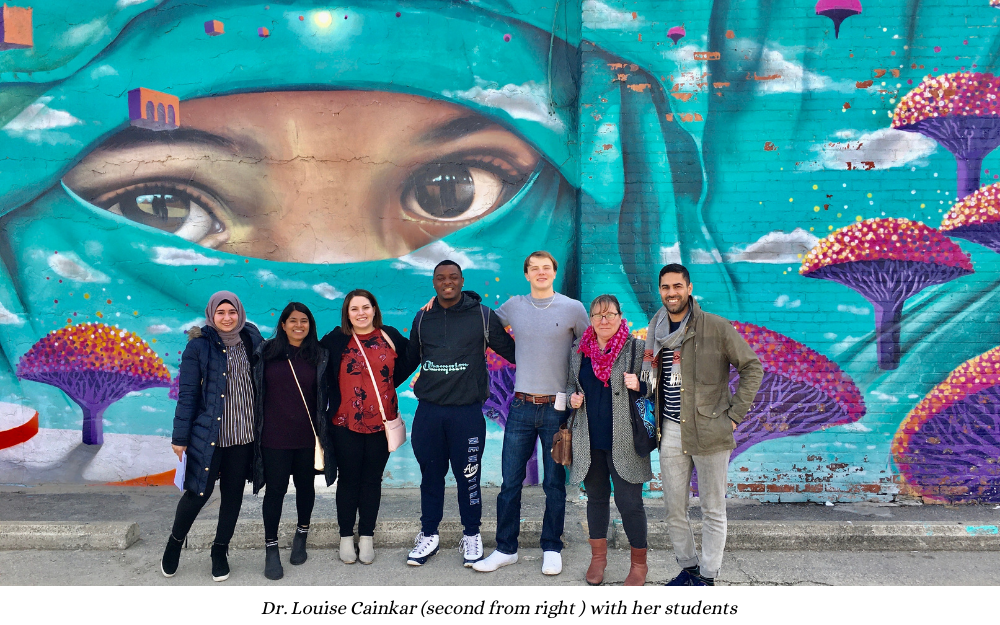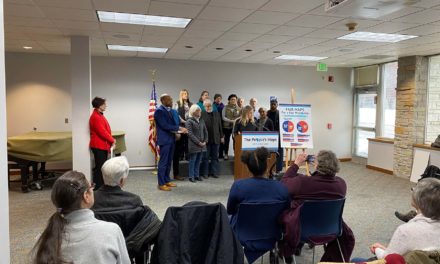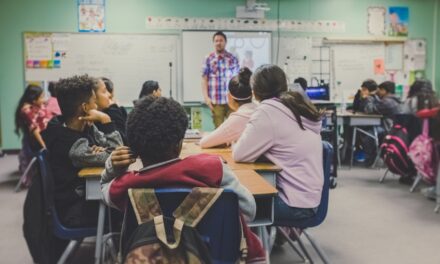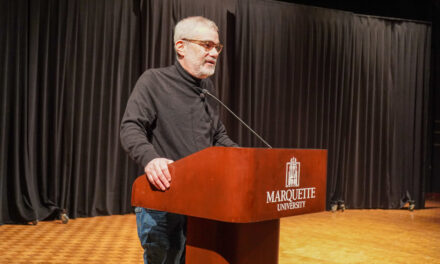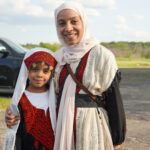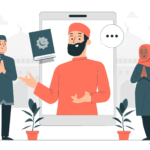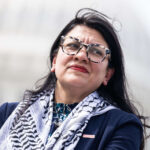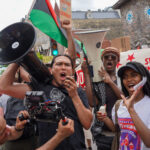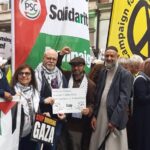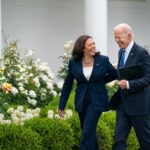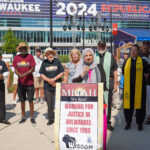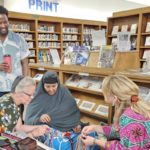When Marquette University professor Dr. Louise Cainkar decided to provide students with an Islamic immersion trip, Islamophobia was spiking in the United States.
“If you recall, in 2016, anti-Muslim hate groups were rising. Elected officials and candidates for office were calling Islam an evil religion, a wicked religion and some said it was not a religion at all,” said Cainkar, an associate professor of social and cultural sciences and director of MU’s Peace Studies Program. “And, of course, President Trump campaigned on an anti-Muslim stance.”
Cainkar decided to “expose our students to the reality of Islam” through a five-day immersion trip to Dearborn and Hamtramck, Michigan, the two U.S. cities with the largest Muslim population in the country. With funds she secured through a strategic innovation grant, the annual spring break trip launched in 2016.
Four “Peacemaking Immersion Trips” with the theme “Engaging Muslims, Countering Islamophobia” have been made since. The last was in March.
Cainkar accompanies students each year on the Detroit-area tour, where they learn about the Muslim-American experience. The hope is that “the students will become active agents in engaging Muslims and encountering Islamophobia,” the MU Center for Peacemaking’s announcement about the trips explains.
“They have been amazingly successful,” said Cainkar at last week’s Soup with Substance, a weekly noontime program (now virtual) for the Marquette community that focuses on social justice and peacemaking topics, hosted by MU Campus Ministry and the Center for Peacemaking. Cainkar and students who attended the 2019 and 2020 trips talked about their experience.
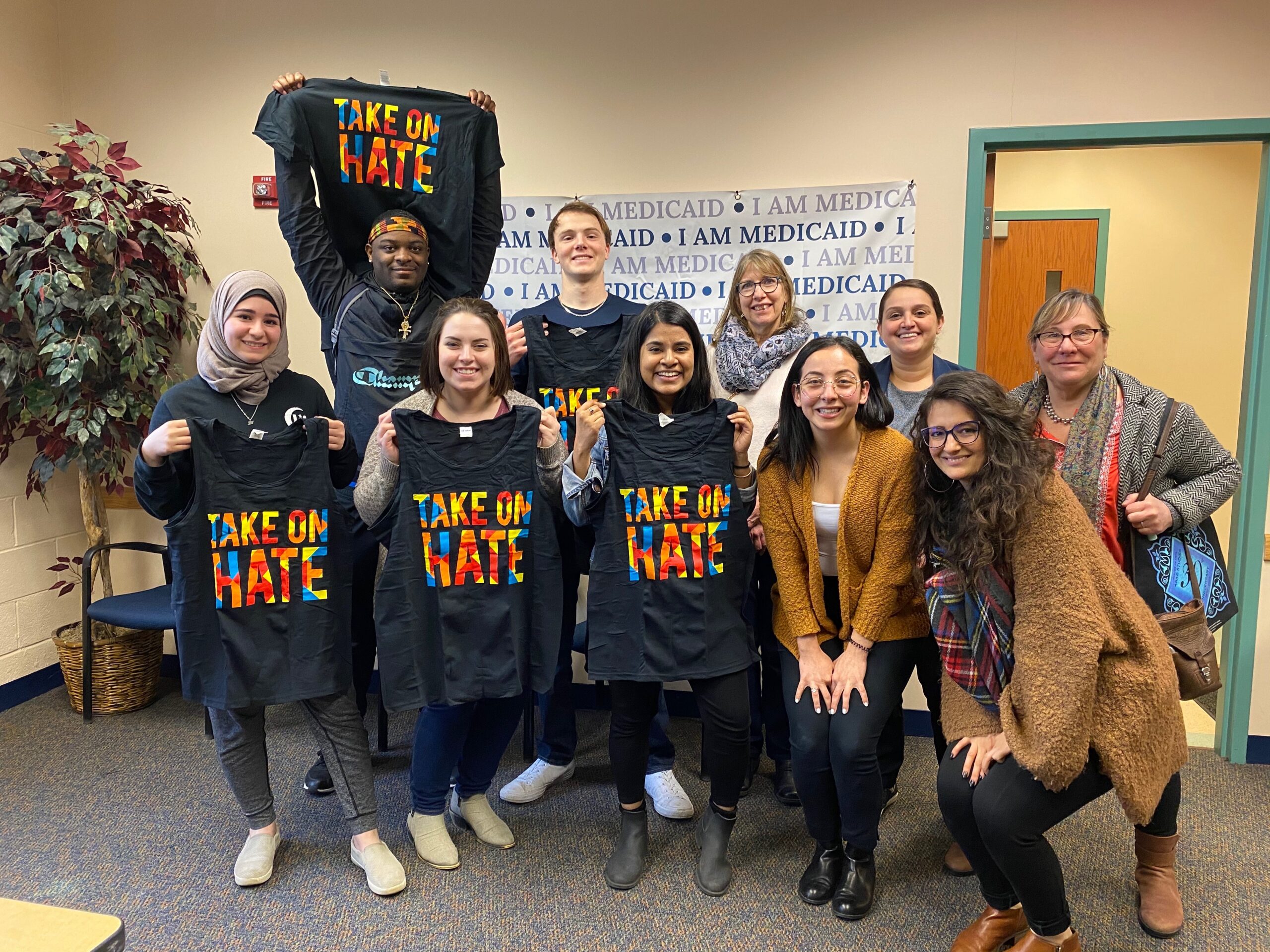
Students learn from experience
“I know I can give students 10 articles and five books to read, and they won’t have the same level of knowledge they would from actually meeting with Muslims, a variety of Muslims, and feeling the diversity and complexity that is flattened by stereotypes,” she said.
The trip is “jam-packed,” said Cainkar. They visit mosques and meet religious leaders, scholars, activists, Muslim politicians and non-Muslim politicians who have Muslim constituents. They visit restaurants and taste foods from the Middle East and North Africa. They participate in a day of service work and engage in daily reflection, sometimes in a car with their professor between stops.
“We start at 8 a.m. and are running until 10 p.m. every night,” said Cainkar. “We do a lot so students can see that there is no way you can say ‘a Muslim thinks this’ or ‘all Muslims are like this.’ It’s just not possible with the complexity we are looking at.”
In the Detroit area, “you have this concentration of Muslims, the diversity that you wouldn’t find anywhere else in the world,” Cainkar explained. “There are 50 mosques in Dearborn and Hamtramck. On top of that, Malcolm X was here and the first mosque for the Nation of Islam, which started decades ago, dating back to the beginning of the 20th Century. There is a large African American Muslim population, heavy Arab, and now also Bangladeshi migration.
“Dearborn was settled by Arab immigrants who have been there for more than 100 years,” she added. “It is home to the Islamic Center of America, a large, amazing, beautiful mosque that is evidence of a community that has been entrenched for decades and decades and has reached the socio-economic status that they can afford to build a mosque like that.
“Hamtramck, which is on the other side of Detroit from Dearborn, is traditionally a Polish town, but now is a Muslim-majority city. Its population is comprised mainly of Bangladeshis and Yemenis. Dearborn and Hamtramck are the center of our activities, but not the only places we go,” Cainkar said.
Touring Muslim Detroit
Sarah Lemar, a master’s student in international affairs, and Max Eliason, a junior studying anthropology, discussed their experiences. Eliason went in 2019 and Lemar in 2020.
Lemar was on the trip in mid-March when she heard Marquette was closing in-person classes because of the pandemic. Speaking for the Center for Peacemaking, CPM Program Associate Parisa Shirazi said, “We are really grateful that these students were able to have this experience before we went into quarantine.”
Lemar said she was pleased to have the opportunity to meet so many influential and knowledgeable people, including religious and political leaders. Among them, the students met Debbie Dingell, the U.S. Representative for Michigan’s 12th Congressional District, who welcomed them to her office. Dingell spoke about “championing a really diverse community,” Lemar said.
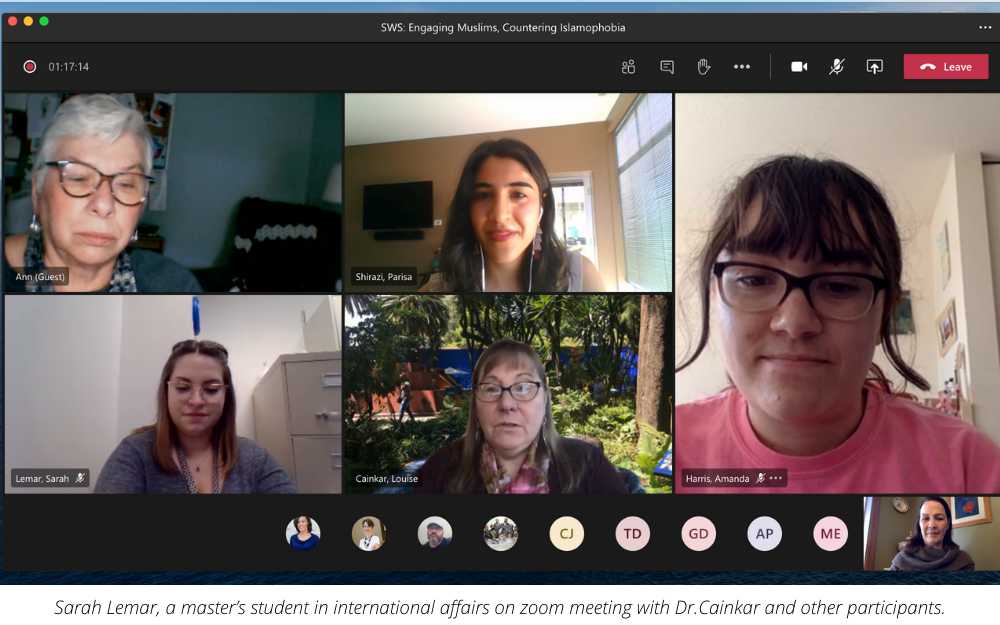
Students also met State Representative Abdullah Hammoud at a Yemeni coffee shop. He told them about how he won his office. “He had to carry not only the part of Dearborn that is heavily Arab but also had to carry the other side of Dearborn that is the white majority, and can be anti-Arab,” Cainkar said. “He walked from door to door, introducing himself to people and ended up successfully winning his campaign.”
Then they were off to witness a BRIDGES meeting. “BRIDGES stands for Building Respect In Diverse Groups to Enhance Security,” explained Lemar. “It was a forum for dialogues between law enforcement and community leaders.”
After hearing lots of discussions, they headed to the offices of the American Civil Liberties Union, where they met ACLU Associate Director Rana Elmir. “Our minds were so full of information,” Lemar said. “It was great to reflect and process it with somebody who specializes in these types of community issues—social justice and civil liberties.”
Eliason noticed the variety of the mosques. “They all vary quite greatly,” he said.
The large mosque in Dearborn “is huge and very beautiful inside. It reminded me of a cathedral,” he said. Then tucked away in a repurposed building in Hamtramck was a mosque “with prayer rooms on the main floor in whatever rooms they could fit them in.” He also visited a Sufi community that lived out of town, on their own land. “It was a beautiful place, but wildly different.”
What all the mosques share in common is an atmosphere of reverence, Eliason said. “It’s similar to the way it feels in church, people are respectful, quiet, prayerful.”
“You didn’t really know if you were in a Sunni or a Shia mosque,” Cainkar said. “There are really very small differences between them.”
While the Marquette students are on the trip, they do service work, helping rehab houses for the Dream of Detroit.
“We also do service at Zaman International, an expansive Muslim-run charitable organization aimed to help women and children, with a food pantry, clothing and furniture warehouse, and job training,” said Cainkar.
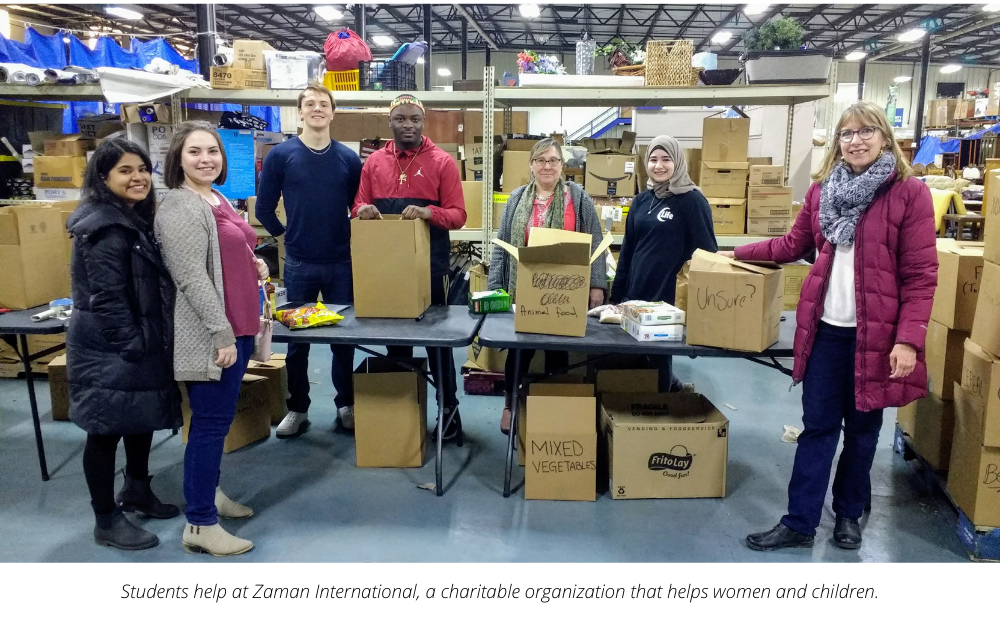
Favorite Moments
One of Cainkar’s fondest memories was visiting the Bangladeshi mosque in the repurposed building. “I was going in with my students and saw they were putting pennies in those coin wrappers. Their donations from their congregation was coming in pennies and dimes and nickels.”
Lemar’s favorite part of the trip was visiting the Arab American National Museum, the first and only museum dedicated to telling the story of Arab Americans. “When you walk in, the first thing you see is an exhibition about the history and contributions of Arab people in medicine, music, architecture, language, and religion.”
She noted the beautiful dome, decorated inside with Arabic calligraphy, and was struck by how the Arabic script is used in Islamic art.
“Whether its architecture or calligraphy or the tiles or the domes or the rounded windows, the art is very rooted in Islam and in Islamic understandings of art,” Cainkar added. “Those are all forms of Islamic art and architecture that went from Asia to Africa to Spain to Mexico to Latin America – you can see reproduced all over Mexico. The integration of faith and culture and how that moves across the world is pretty exciting.”
Lemar said, “For someone my age who has been surrounded by the media constantly, the most influential exhibit is about the portrayal of Arabs in media.” Screens around the room showed scenes from movies that “painted Arabs as violent or warmongering or backward or hypersexualized.
“It is startling when you see all these examples. You are taken aback because it is so incredibly negative. It shakes you to the core.”
For Eliason, the food “was probably my favorite part of the trip. The nature of Arabic food itself is very sharing oriented. When you order a dish, you don’t get your own dish. A platter is put in the middle of the table. A lot of sharing involved. That greatly facilitates the conversation around it.”
Eliason enjoyed trying all the different ethnic variations of food. “I was able to write a paper just about the different types of bread we had on the trip— Yemeni, Iraqi, Bangladeshi, Turkish, Syrian, and more.”

“On the 2019 trip, I, along with two others, arrived early. We went to a pizza place and this pizza place was halal, meeting Islamic dietary restrictions. Seeing that as one of my first experiences was an amazing thing. In local communities, you have Polish food but they might have changed some of their recipes to cater to the new Islamic community.
“I heard there is a Polish sausage place where the sausages good and are halal. A lot of Muslims will go there and there will be block-long lines to get these sausages. The evolution and incorporation of the food shows how the communities themselves are integrating and hybridizing, which I think is a very wonderful thing.”
“Hospitality is part of the culture,” Cainkar said. “Everyone was feeding us. There was so much food.”
A pivotal experience
“This trip is called Islam immersion, but you see it is not just about Islam,” said Cainkar. “It’s about culture, it’s about food, it’s about economics, it’s about ethnicity, it’s about the larger context of Detroit. It doesn’t extricate Islam from the context in which it lives and thrives. It introduces students to Islam in its context and the way it contributes to the Detroit metropolitan area, and it’s a very visible, evident force in that region.
“Islamophobia works on stereotypes that flatten complexity, as if all Muslims are the same. This experience exposes students to the diversity and complexity of Muslims, whether by ethnicity, race, socio-economic status, country of origin, location, type of mosque, occupation, and the range of ways of ‘being Muslim.’ With such complexity, there is no way one can say ‘Muslims think this’ or ‘Muslims do this,’ let alone call them terrorists,” Cainkar said.
The testimonials of two students, one of them Muslim, were shared. The students were not able to attend the talk.
“For the first time in my life, I was able to see who the Muslim (American) really is, and the true humanity in it all. When you learn about something without experiencing it, you can feel removed (and absent) from it, creating an appreciation gap. This was the case throughout my childhood and early adult life regarding the Muslim community/culture and this trip served as a catalyst to help bridge this gap.” – Will
“It opened up my horizons to the other Muslims like me in the world and diversified my world-view on the vast diversity of Muslims. People really do need an open mind when going on this trip, for there are certain things that they may not understand if they don’t show the openness to understanding. And an open mind comes with knowing that one cannot paint a single image of 1.8 billion Muslims by a single encounter of Muslims.“ – Lelana
See the Engaging Muslims, Countering Islamophobia presentation here.
